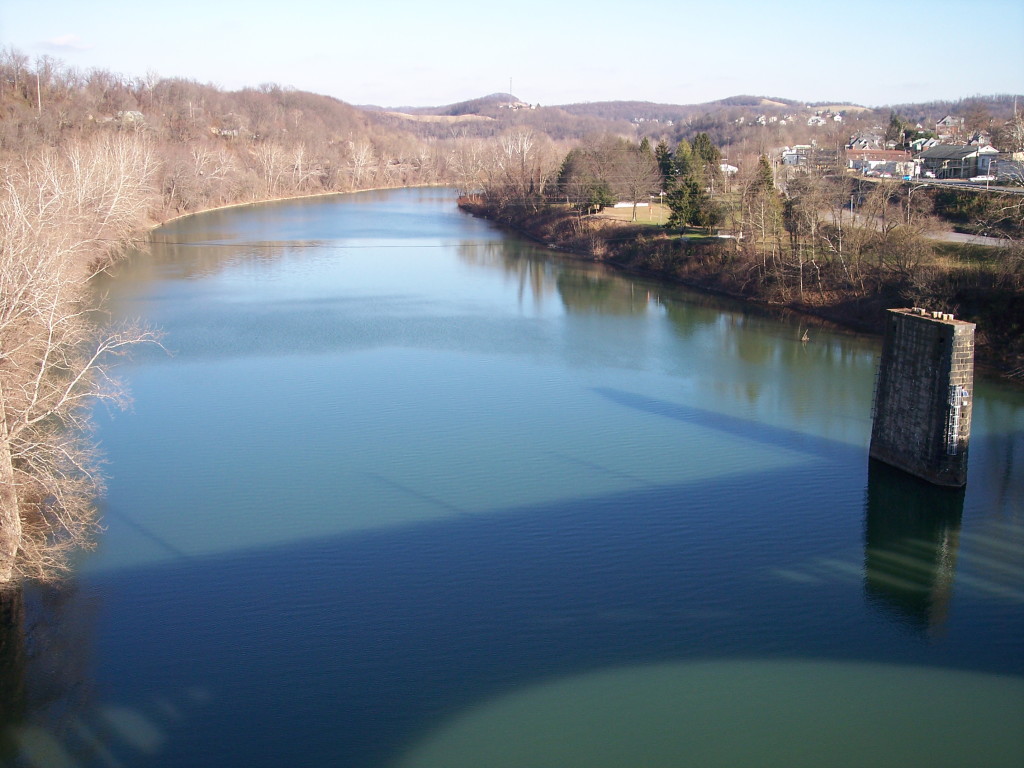The power plant that is being built up in Moundsville seems to be on schedule to be completed in June of 2018, just a little less than three years from today. Of course, they haven’t even moved a shovelful of dirt yet. Let’s hope that the construction schedule is easy to stick with. A nice natural gas fired power plant would put a lot of this extra natural gas we have lying around to good use. More demand equals more development equals better bonuses and royalties for mineral owners. That’s the kind of equation even a lawyer could love.
Lease Terms: Gas Storage
One issue that we run across with nearly every oil and gas lease that we see is that the lease gives away the rights to store gas on the property. This has been standard language in West Virginia oil and gas leases for decades, nearly a century. Sometimes it’s just a phrase contained in a sentence, other times it’s the subject of a full paragraph or more.
 Gas storage gives the oil and gas company the right to store gas from other places on your property. Gas storage isn’t the primary purpose of an oil and gas lease. The company wants to produce gas first of all, but once the gas is all gone the company might decide to use the property for gas storage. The formations that trapped the naturally-occurring gas and kept it from escaping to the surface will also trap gas that the company pipes in from other locations and injects into the formation.
Gas storage gives the oil and gas company the right to store gas from other places on your property. Gas storage isn’t the primary purpose of an oil and gas lease. The company wants to produce gas first of all, but once the gas is all gone the company might decide to use the property for gas storage. The formations that trapped the naturally-occurring gas and kept it from escaping to the surface will also trap gas that the company pipes in from other locations and injects into the formation.
Gas storage exists mainly because natural gas production and natural gas consumption take place in different locations. Historically, natural gas was produced in large quantities in Oklahoma and Texas, and the large markets for natural gas were on the east coast. Pipelines carried the natural gas from production to consumption, but during the summer months consumption was a lot lower than production. The company would get a much lower price during the summer, and needed far less gas. Then in the winter the price would go up and the pipelines were overburdened with gas. There are other factors in play as well, but that’s the main reason for gas storage to exist.
Natural gas storage fields can last an awfully long time. The very first natural gas storage field in the United States, the Zoar field, was put into operation near Buffalo, NY in 1916. It is still in operation today. There are no plans to mothball it in the near future.
The natural gas that is injected into a storage field doesn’t come from the property, so it isn’t owned by you, the mineral owner. It’s been extracted from some other property, sometimes from half way across the continent, and a royalty has been paid on it to the other mineral owner.
Since the storage company has already paid a royalty on the gas to some other mineral owner, it’s not going to pay a royalty to the mineral owner where the gas storage field is. Sometimes the mineral owner will be able to negotiate for a royalty on gas stored on his or her property, but it will be pennies on the dollar compared to a real royalty, and rightfully so. The mineral owner is not the owner of the stored gas.
A lack of royalty payments isn’t the big problem, though. The big problem is that your lease, which you thought was supposed to be for oil and gas production, is kept alive by gas storage. Where it would otherwise have expired by it’s own terms, since oil and gas production had stopped, the lease stays alive because the gas storage clause is being put to use.
The company gets to keep the rights to produce all the formations that are included in the lease, usually all the formations from the surface to the center of the earth, but doesn’t have to actually produce them. The company can keep the lease indefinitely, waiting for a better price on the oil or gas, and then produce them when it wants to or sell the production rights to another company. It won’t have to enter into a new lease with the mineral owner. It won’t have to pay a new bonus, negotiate a new royalty, or negotiate any other terms of the lease.
Here in West Virginia it didn’t matter too much whether a lease was held in place by gas storage or not until the Marcellus shale boom. Leases were being paid for at $5.00 per acre and the typical royalty was 12.5%. There wasn’t a whole lot to negotiate. Now if there’s any interest at all in minerals, the companies will offer $250 per acre and a 12.5% royalty on the low end, and $4,000 per acre and 15% royalty on the high end, and they’ll negotiate up from there.
People who have leases that are being held alive by gas storage don’t get the opportunity to negotiate the terms of a lease, or receive a new bonus payment.
We highly recommend that you get gas storage language removed from your lease. It’s usually very easy to negotiate, and can be financially beneficial to you in the long run.
If an oil and gas company absolutely has to have gas storage rights make sure that gas storage is a separate agreement. An oil and gas lease should only deal with oil and gas production and nothing else.
West Virginia Landowners Win Court Case Against Mountain Valley Pipeline
Judge Irons in Monroe County, WV ruled yesterday that the surveyors that the Mountain Valley Pipeline has been sending out do not have the ability to enter your land without permission. The will be considered trespassers.
I think this is exactly what West Virginia law says, and I think the judge got it exactly right.
Read more about it here.
The Appalachian Gas Oversupply: Over Soon?
The biggest problem for gas developers, and consequently royalty owners, here in West Virginia has been the lack of pipeline infrastructure to transport the gas to market. The Marcellus shale development has been so fast that it was impossible for pipeline companies to keep up. Either that or they just didn’t think ahead far enough. Either way, midway through 2015 we need pipelines in a bad way. Hope is on the horizon, however.
This article over at SeekingAlpha is practically a list of pipelines and completion dates. Conspicuously absent are the Mountain Valley Pipeline and the Atlantic Coast Pipeline, but those won’t even start construction until next year.
The article points out that pipelines are about to start coming online, and that will drive the cost of transportation down. As the cost of transportation goes down, the profit to producers is going to go up.
West Virginia mineral owners can expect to see an uptick in production, so their royalty checks should get bigger. Those who aren’t leased can expect to see leasing start back up, too.
The next few years will see increased transportation capacity, so mineral ownership should only get better and better from here on out.
Utica in West Virginia: More Details
WVMetroNews has an article by Sunshine Wiles which points out a few things about the Marcellus Shale. It points out that the Utica is much deeper than the Marcellus, and that we in West Virginia have “some of the lowest energy costs in the country”.
One of the reasons that energy cost is so low is that West Virginia mineral owners tend to sell cheap. Hold on to your minerals, don’t lease for a couple thousand bucks an acre and a royalty of 12.5% (which is 1/8), and write your legislator about forced pooling to make sure they vote against forced pooling.
This is Weird about Water and Fracking
Maybe this is some Freakonimics-type thinking here, but there’s a thought bouncing around the internet that goes something like this, “coal-fired power plants use a lot more water than natural gas-fired power plants, and since we’re moving towards more of the latter because we have so much more natural gas than we used to, and since fracking is why we have so much more natural gas than we used to, then fracking is reducing the amount of water that we are using.”
This article over at wateronline.com says we used 33 trillion gallons of water in 2012, down from 52 trillion gallons in 2005. If somebody knows more about this subject than we do, and can add something to this article, we’d love to hear it.
Marcellus and Utica Producers are Still Making Money
With gas and oil prices down, it’s been a lot harder to make money in the oil patch. The one good thing about this situation is that producers have had to figure out how to cut costs. Producers have convinced suppliers to lower their prices, drillers have figured out new tec hniques, leasing has slowed down, lease prices have dropped, and people have been fired.
hniques, leasing has slowed down, lease prices have dropped, and people have been fired.
Most of the cost cutting measures end up in people getting fired. We hate to see people get fired. We’ve been there ourselves more than once.
The only good thing about it is that companies are now profitable at a much lower price point than they were a year ago. They’re still in business, still employing people, and still paying out royalties.
Mark Passwaters over at snl.com (not the comedy show) thinks that most producers are capable of turning a comfortable profit with oil at $75/bbl.
While that is interesting in general for West Virginia mineral and royalty owners, the most interesting part of the article says that Utica and Marcellus producers are doing just fine at $3.00/MCF gas.
Why is that? The success mantra for developers in the Marcellus has been “keep costs low”. I’ve heard that from more than one small developer, and it’s true for the mid-majors like Antero and Southwestern, too. They’ve been on the cutting edge of science in the shales from the beginnin
Antero Resources 2Q15 Production is Huge
Antero Resources produced awfully close to 1.5 billion cubic feet per day of natural gas in the second quarter of 2015. That’s a big number, and an interesting number, too. Why is it interesting? Because that’s the same amount of gas that the Atlantic Coast Pipeline is expected to be able to transport every day. You can go take a look at Antero’s Second Quarter Report at this link.
United States Burning More Gas than Coal
 This news has us a little torn. According to a report released by the U.S. Energy Information Administration, the United States now burns more natural gas in energy production than it does coal. While that’s good for West Virginia, it’s also bad for West Virginia. A huge portion of West Virginia’s economy depends on coal, and has for generations. West Virginia’s economy is being boosted by natural gas development, and will for decades. It’s probable that natural gas will replace coal, and that West Virginia’s economy will do well on natural gas, but the transition is going to be full of heartache and misery for some folks. The southern counties especially are going to be hard hit since there’s not as much natural gas development going on down there, and won’t be for the near future.
This news has us a little torn. According to a report released by the U.S. Energy Information Administration, the United States now burns more natural gas in energy production than it does coal. While that’s good for West Virginia, it’s also bad for West Virginia. A huge portion of West Virginia’s economy depends on coal, and has for generations. West Virginia’s economy is being boosted by natural gas development, and will for decades. It’s probable that natural gas will replace coal, and that West Virginia’s economy will do well on natural gas, but the transition is going to be full of heartache and misery for some folks. The southern counties especially are going to be hard hit since there’s not as much natural gas development going on down there, and won’t be for the near future.
Manhattan Institute – Start Drilling More!
Just a quick little blurb about this. The Manhattan Institute has published a report saying that the United States should produce more gas and change laws to make gas production easier and more lucrative. We agree. Read the report here.

